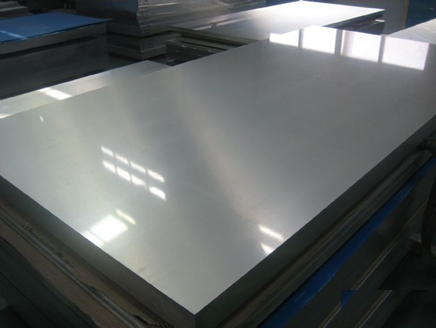- EN 441 stainless steel flat bar Hot rolled / cold drawn
- STS304L stainless steel round bar
- Stainless Steel Hot Rolled Flat Bar
- ISO Stainless Steel Angle Bar
- straight cut stainless steel wire sus304
- 304 bright soft annealed stainless steel wire
- 304L bright soft annealed stainless steel wire
- Stainless Steel Wire
- AISI316 stainless steel round pipe/tube
- 300 Series grade stainless steel round pipe
- AISI/SUS stainless steel pipe/tube cold drawn
- ASTM A249 stainless steel round pipe

The difference between 304 and 316 stainless steel plates
Inquiries : 10 - 2023/7/18 15:37:06
Stainless steel is a popular material used in a wide range of applications, from household appliances and kitchenware to industrial equipment and construction projects. Two of the most common types of stainless steel are 304 and 316, both of which offer unique properties and advantages. In this article, we'll explore the differences between 304 and 316 stainless steel sheets, including their composition, corrosion resistance, and applications.
Composition
The main difference between 304 and 316 stainless steel is their composition. 304 stainless steel is made up of 18% chromium and 8% nickel, while 316 stainless steel contains 16% chromium, 10% nickel, and 2% molybdenum. The addition of molybdenum gives 316 stainless steel better overall corrosion resistance, especially against chlorides and other harsh chemicals.
Corrosion Resistance
Both 304 and 316 stainless steel are known for their corrosion resistance, but 316 stainless steel offers superior resistance in certain environments. For example, 316 stainless steel is more resistant to pitting and crevice corrosion in marine or coastal environments, where saltwater and other harsh conditions can cause corrosion. Additionally, 316 stainless steel is more resistant to high-temperature corrosion than 304 stainless steel, making it a better choice for applications that involve exposure to extreme heat.
Applications
While both 304 and 316 stainless steel can be used in a wide range of applications, their unique properties make them better suited for certain uses. 304 stainless steel is commonly used in household appliances, kitchenware, and construction projects, as well as in the food and beverage industry. 316 stainless steel is often used in marine and coastal environments, as well as in the chemical and pharmaceutical industries, where it's important to have high corrosion resistance.
Cost
In general, 316 stainless steel is more expensive than 304 stainless steel, due to its higher nickel and molybdenum content. However, the added cost may be worth it in certain applications where corrosion resistance is critical.
In conclusion, while 304 and 316 stainless steel are both popular choices for a wide range of applications, their composition, corrosion resistance, and cost can vary significantly. When choosing between these two types of stainless steel, it's important to consider the specific requirements of your application, including the environment, temperature, and potential exposure to harsh chemicals. By understanding the differences between 304 and 316 stainless steel, you can make an informed decision and choose the best material for your needs.

